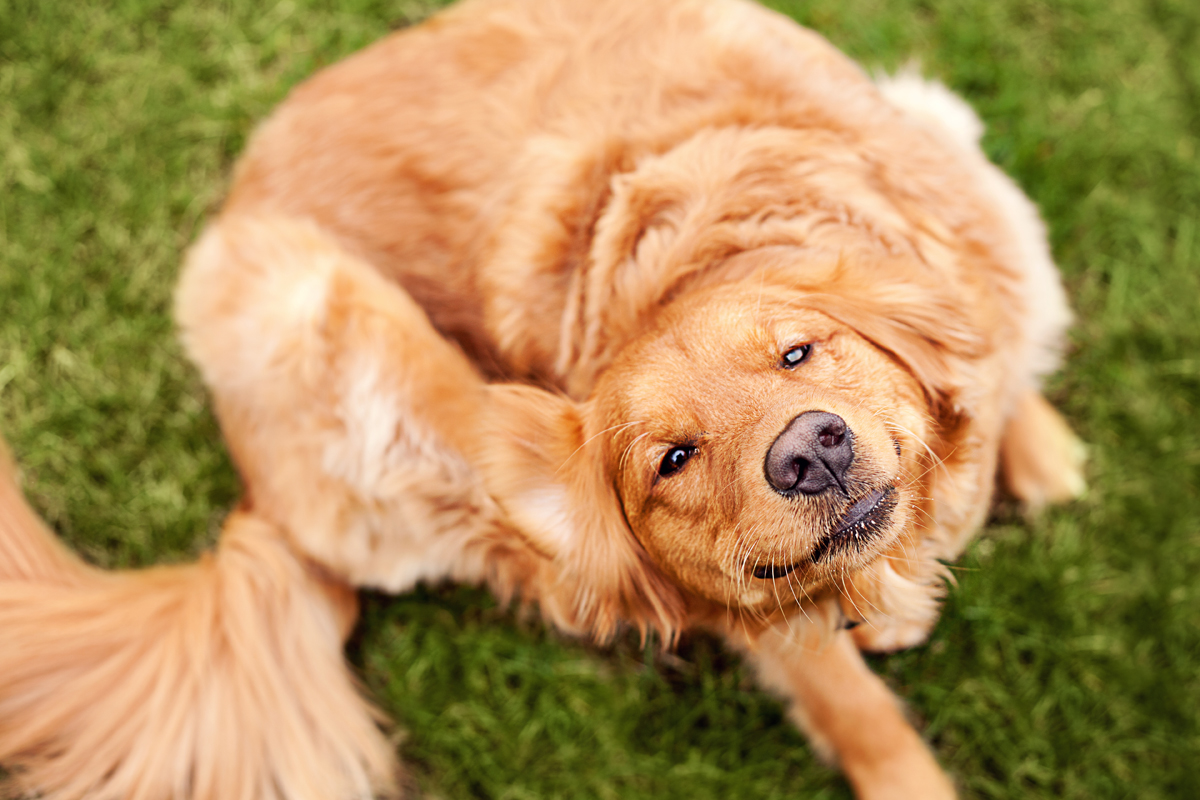Scratching, constant licking: 13 signs of spring allergies in your dog
2024. March 20 - Photos: Getty Images Hungary
2024. March 20 - Photos: Getty Images Hungary

Is your dog scratching, biting or licking itself more often than usual? Have these symptoms intensified since the warmer weather arrived? See anything unusual about your pet's ears or eyes? Dogs, like humans, can develop pollen allergies and can show symptoms at any time of the year. Spring, summer and autumn are usually the times of year when pollen allergies cause the most discomfort to allergic pets.
Just like humans, pets can suffer from seasonal allergies. Although the symptoms are usually not severe, they can still be very unpleasant and annoying for the dog. However, severe or persistent allergies can lead to lifelong health problems in pets. In the following, we have collected the most common symptoms of spring allergies in dogs so that you will know what to look out for.

Some allergens appear early in the year. For example, hazelnut barks already bloomed in many places in January, so symptoms may not necessarily appear only in spring. Allergies occur when when the immune system identifies agents in the environment as dangerous. Common allergens include pollen from trees, grass and weeds, as well as mould and dust. The parasites – such as fleas – can cause reactions similar to that of allergens, so it is important to recognise the symptoms and signs.
Have you noticed that your pet often scratches when it is outdoors or after it has come back from the garden? Mild, persistent itching or furious scratching can both indicate an allergy (including pollen allergy) due to increased exposure from being outdoors. Itching is one of the most common initial symptoms in allergic dogs.
When exposed to allergens, people may develop hives. This can also happen in dogs. Hives can develop anywhere on the skin, although they are more easily seen in areas with sparse hair, such as the abdomen and underarms. Hives often occur on the head, face or sides of the legs. Based on exposure to pollen or other allergens, dogs can develop bumps on several parts of the body. These can be present for weeks.
The abdomen, paws and around the anus are areas that dogs may lick excessively if they are itchy. If you notice excessive or obsessive licking, the most likely cause is allergy. As mentioned above, itching is an initial sign of allergy. And licking is certainly a sign of excessive itching in dogs.
Red, swollen eyes are a common symptom of allergies in humans. Although dogs are not affected as often by these symptoms, some dogs can also develop them. Hair loss around the eyes is another warning sign to watch out for. Only one or both eyes may be affected.
Tearing of the eye is also a possible symptom of environmental allergies in dogs. This may be the only sign affecting the eye, or it may be accompanied by swelling or redness. Sometimes the discharge can become pus-like and may be green or yellow in colour.
If you notice your dog rubbing its face against surfaces such as the carpet, sofa or cushions, this is clearly an attempt to relieve the itch. Face rubbing is also a form of scratching. Some dogs will try to rub their whole body on one of these surfaces.
As the allergy progresses or persists, scratching and inflammation of the skin leads to damage to the hair follicles. This causes hair loss. Some dogs may even chew and bite their skin, which also causes hair loss. It is often seen on the abdomen, legs and tail. Some dogs tend to have less body hair due to environmental allergies and associated skin inflammation.
Allergens such as pollen not only affect the skin but also cause inflammation in the dog’s ear. This can lead to red, irritated ears that can become infected. This causes the ears to become unpleasant smelling and visibly red and inflamed. Some dogs may only experience mild discomfort and may not show severe symptoms. Instead, you may notice a mild head shaking at first.
Dogs may shake their heads due to irritation of their ears and may not want to be petted on the head. Head shaking can be a sign of discomfort due to an itchy ear or an ear infection.
The skin around the mouth, chin, paws, neck and abdomen typically becomes red, inflamed and itchy from pollen allergies or other allergens in the environment.
The hot spots usually occur due to excessive moisture in a particular area of the skin. It is usually seen in areas where dogs bite themselves, such as the side of the body or the base of the tail. Some breeds, for example Labradors are more prone to the problem. The hot spots can be quite uncomfortable for your pet and can often become infected.
If you see your dog sneezing more than usual, this could be a sign of a pollen allergy. Sneezing inwards is another sign of a pollen allergy and can be seen when outdoors.
Dogs can often have sensitive skin. This may be indicated by the dog twitching or moving when you touch it, as the primary symptom of an allergy is discomfort and inflammation of the skin. Some dogs like it almost too much when you scratch their backs, but it’s important not to do this, as it will only make things worse.
Make sure you see your vet if you notice any of the above symptoms or a combination of them in your pet. Symptoms only occurring in spring and summer are probably caused by a pollen allergy. If your dog suffers all year round, or at other times of the year, this does not rule out pollen allergy. Rather, a combination of allergies may affect your pet.
Follow us!
facebook instagram youtube spotify